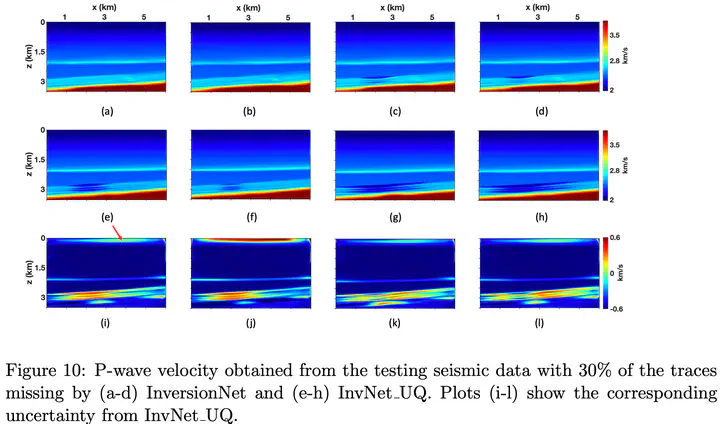Enhanced prediction accuracy with uncertainty quantification in monitoring CO2 sequestration using convolutional neural networks

Abstract
Monitoring changes inside a reservoir in real time is crucial for the success of CO2 injection and long-term storage. Machine learning (ML) is well-suited for real-time CO2 monitoring because of its computational efficiency. However, most existing applications of ML yield only one prediction (i.e., the expectation) for a given input, which may not properly reflect the distribution of the testing data, if it has a shift with respect to that of the training data. The Simultaneous Quantile Regression (SQR) method can estimate the entire conditional distribution of the target variable of a neural network via pinball loss. Here, we incorporate this technique into seismic inversion for purposes of CO2 monitoring. The uncertainty map is then calculated pixel by pixel from a particular prediction interval around the median. We also propose a novel data-augmentation method by sampling the uncertainty to further improve prediction accuracy. The developed methodology is tested on synthetic Kimberlina data, which are created by the Department of Energy and based on a CO2 capture and sequestration (CCS) project in California. The results prove that the proposed network can estimate the subsurface velocity rapidly and with sufficient resolution. Furthermore, the computed uncertainty quantifies the prediction accuracy. The method remains robust even if the testing data are distorted due to problems in the field data acquisition. Another test demonstrates the effectiveness of the developed data-augmentation method in increasing the spatial resolution of the estimated velocity field and in reducing the prediction error.